Even for most naturalists, freshwater fish diversity is out of sight, out of mind.
Yes, nature-loving people are generally familiar with a few “game” species – the trout, bass and walleyes – but even many anglers exhibit very poor fishing identification skills. If you doubt this, check out fish ID threads on a typical fishing social media page. There is a growing community of “life list anglers” who appreciate the diversity of fishes, but for most, “freshwater fish” means game fish, a few invasives like carp and the small species lumped (often incorrectly) into the category “minnows.”
I’m an avid angler, but I also enjoy watching all kinds of wildlife. I find freshwater fish fascinating, but I admit that observing them can present challenges. Of course, in saltwater, everyone from casual tourists to hardcore naturalists enjoy spotting colorful and beautiful species via snorkeling and diving.
But freshwater fish watching is possible, either by snorkeling or by taking advantage of species habits like mating and migrating.
Here are some fish watching opportunities to get you started. And as always, I welcome your suggestions for fish watching opportunities, tips and tricks in the comments.
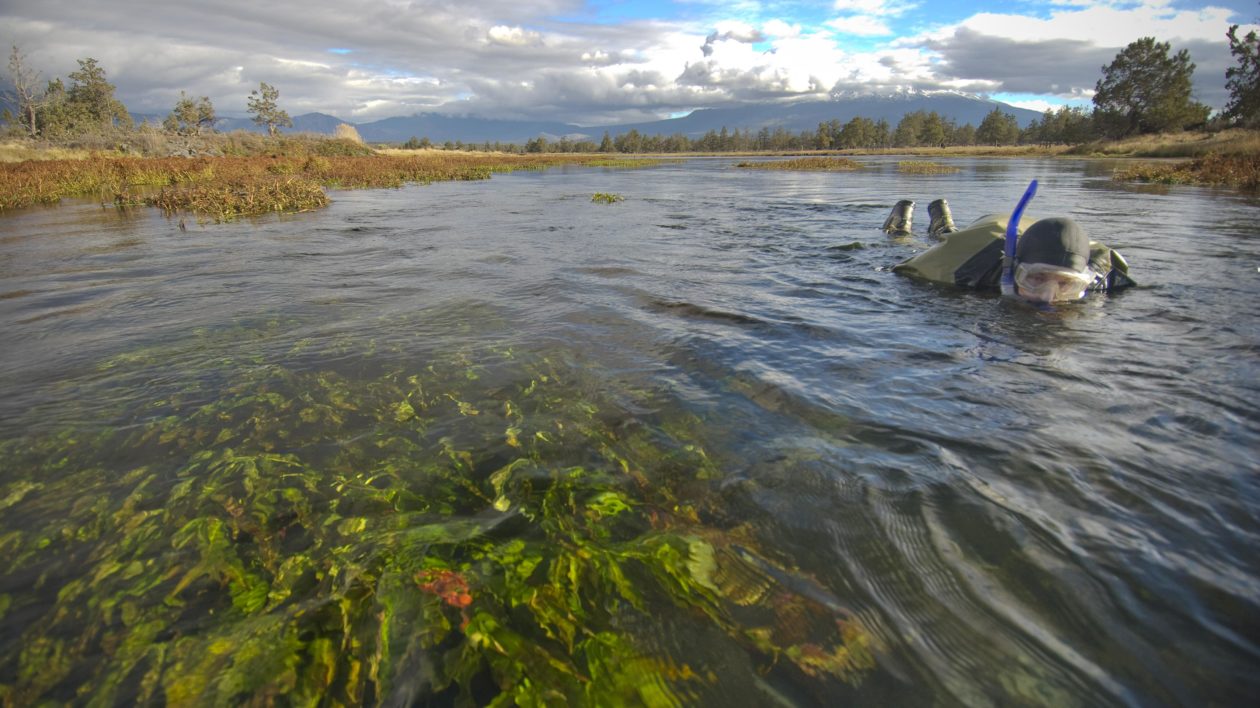
Snorkeling
I’ve fished and canoed The Nature Conservancy’s Silver Creek Preserve countless times, but perhaps my most eye-opening trip was when I snorkeled much of the creek through the preserve. Seeing the trout in their habitat was a treat. (Note: Snorkeling is allowed at the preserve for authorized research purposes only).
For years, freshwater snorkeling was ignored in favor of coral reefs. But many rivers and streams are clear enough to give a clear view of fish and other aquatic species. In the biodiverse rivers of the southeastern United States, you can even see a surprising amount of color: beautiful darters, shiners in gawdy spawning attire, and more.
Because you’re often in flowing waters, as well as various swimming hazards like tree branches, you need to pay attention to safety. During the Silver Creek snorkel, my colleague Dayna Gross became nearly hypothermic in the cold spring water, despite the fact that it was a hot August day. Fortunately, there are some excellent guides to get you started, including Snorkelhead: Adventures in Creek Snorkeling and Snorkeling Rivers and Creeks, both by Keith Williams.
Where to Go: Many spring creeks and smaller waterways can be snorkeled safely. I have even had enjoyable fish watching while snorkeling in Lake Michigan. But the southeastern United States has the diversity of freshwater fish species (and other wildlife) to make a trip comparable to saltwater snorkeling.
Snorkeling Rivers and Creeks not only provides tips on where to find specific fish, but also makes suggestions on where to go. The waters profiled would give you enough to fill years of field trips.
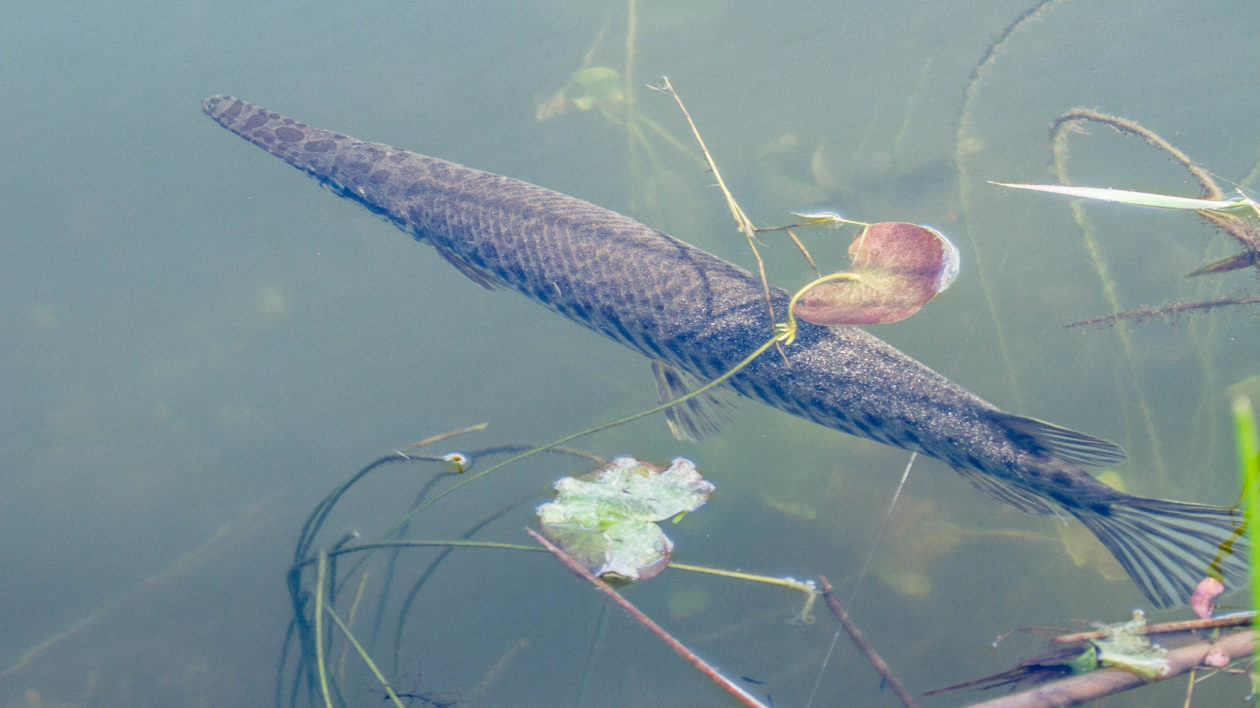
Gar
Some animals – whether we’re talking birds or mammals or fish – are just more striking than others. The gar is one of the world’s coolest looking fish, with a long snout and covered in armor. They swam with the dinosaurs, and when you see them, that fact is not at all surprising.
They are also quite easy to see and observe from land. They gulp air, and often can be found in large concentrations. There are five species in the United States, including the alligator gar, a fish that can reach lengths longer than you are.
Where to See: Gar range widely in eastern, midwestern and southern waters. I have seen large gar aggregations in many slow-moving rivers, from wildlife management areas in Texas to the Louisiana bayou. You can even snorkel with them in some clear Florida springs.
My favorite gar viewing spots are along the Tamiami Trail that winds through Everglades National Park and Big Cypress National Preserve. Here, boardwalks and trails allow fantastic views of Florida gar – often numbering in the hundreds – as they swim, hunt and gulp air. Even better, they’re swimming alongside alligators, softshell turtles, a diversity of other fish and wading birds. It’s one of my favorite places on the planet.
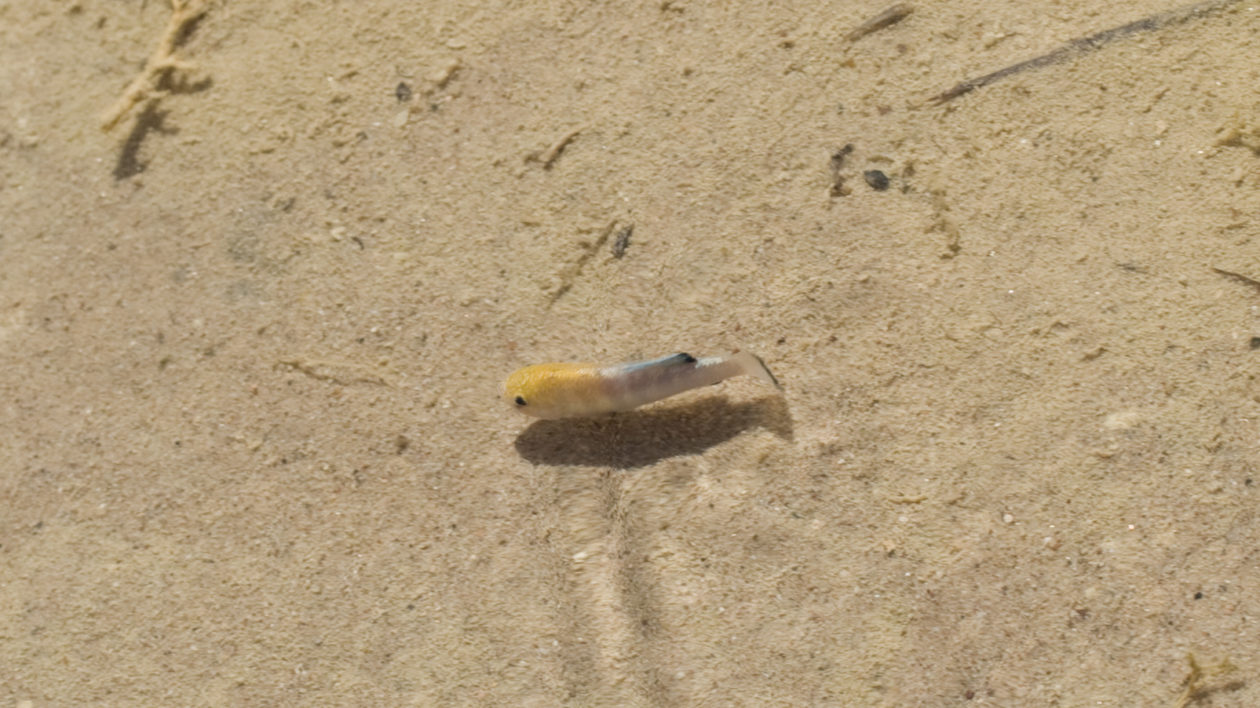
Desert Pupfish
The Mojave Desert may seem to be a strange place to go fish spotting. In the Pleistocene, the deserts of California and Nevada would have been covered in lakes and streams. As they dried up, pupfish – small, knuckle-sized fish – adapted to increasingly tough conditions. Small desert springs became islands of fish habitat.
Species of pupfish are scattered throughout the desert region, and can be seen from boardwalks and viewing areas. While they are small, the clear water allows for easy viewing.
And pupfish are fun to watch: during the spawning season, they chase each other around, darting through the riffles. They’re fighting over breeding territories, but early biologists thought they were playing like puppies – hence their name.
Where to See: In Death Valley National Park, walk the Salt Creek boardwalk for an up-close and personal view of the endemic Salt Creek pupfish.
Ash Meadows National Wildlife Refuge in Nevada offers crystal-clear springs in the desert, with 26 endemic species – more the greatest congregation of unique species in the United States. A series of walking trails and viewing platforms allow nice views of pupfish.
California’s Anza Borrego State Park offers a pupfish viewing pond in its garden by the visitor center, as well as one near the Palm Canyon Trailhead.
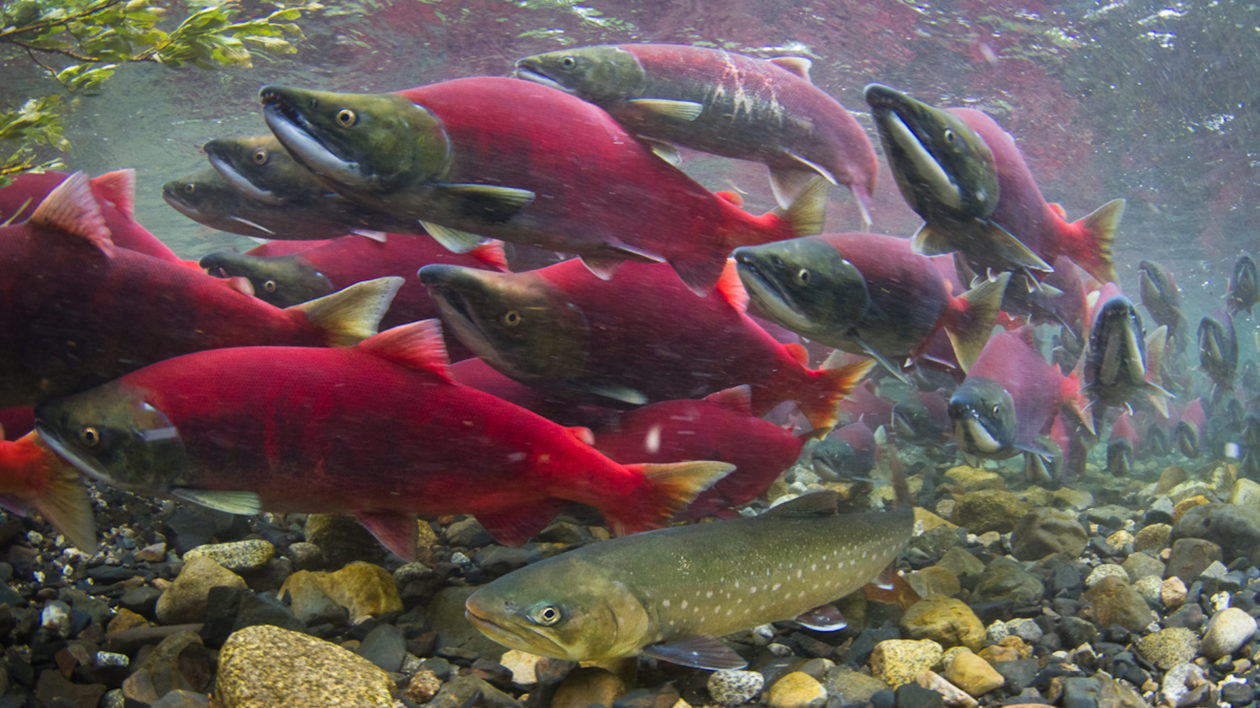
The Salmon Spectacle
This is the obvious pick. Salmon are anadromous, meaning they migrate from freshwater to ocean and back to freshwater. Their return to freshwater, when they spawn and ultimately die, offers one of the great natural spectacles on the planet.
In some rivers in Alaska and Pacific Northwest, sockeye salmon still turn the river red, so abundant are they in their spawning colors. That’s a beautiful sight in its own right.
It’s also a feast. In Alaska, you can see brown and black bears, bald eagles, seals and other species feasting on the richness. If you look closely, rainbow trout, char, grayling and other fish fin downstream of the spawning salmon, picking off eggs and chunks of decomposing fish from the dying salmon.
Where to See: Alaska still offers places to see full runs of migrating salmon, with rivers red with sockeye. The Kenai and Russian rivers are an easy drive from Anchorage, and have large numbers of salmon as well as brown bears (and great fishing, if you’re interested).
Katmai National Park is the site of the famous salmon jumping up waterfalls, with brown bears waiting to snatch them from the air. The waters of Bristol Bay and many other rivers in the state also offer prime salmon viewing.
In the Northwest, there is a fish viewing window at Bonneville Dam. Salmon can be watched, from a distance, spawning in a number of rivers. In June and July, you can see Chinook salmon leaping up Dagger Falls, on the edge of Idaho’s Frank Church River of No Return Wilderness.
In the western United States, don’t overlook kokanee salmon runs. Kokanee are lake-form sockeye salmon, and often migrate up smaller streams. You can still see the red salmon finning in the streams. Several communities now have “kokanee festivals” with interpretive talks and salmon watching trips.
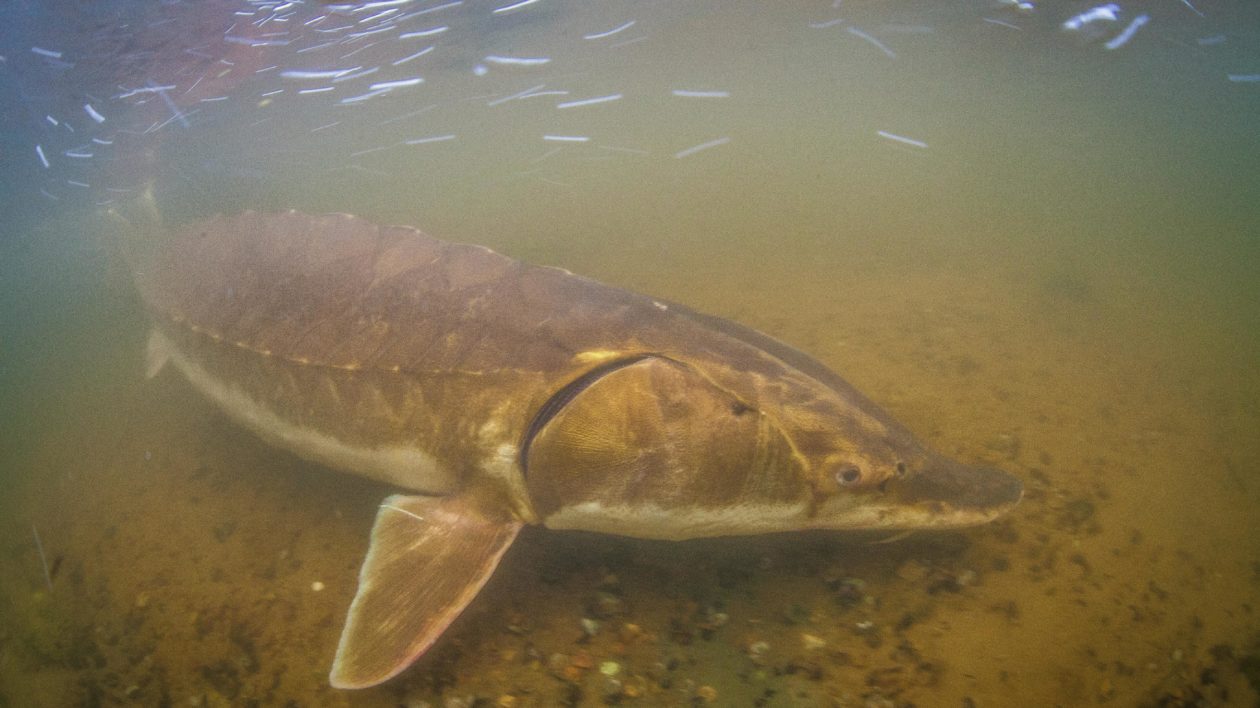
Sturgeon
Sturgeon are another cool-looking, primitive fish. There are several species in North America, including the very large white sturgeon and lake sturgeon. They feed along the bottom, not ideal for viewing. But they also leap, offering a quick view of these incredible animals.
There are clear waters and spawning sites where you can catch a glimpse of sturgeon. It’s worth the effort.
Where to See: You can often see white sturgeon jumping along the Columbia and Snake rivers, although it can be difficult to see on a dedicated trip. There are springs along these rivers where sturgeon can be seen swimming, such as the Thousand Springs region of Idaho.
In his book Natural Spectacles, naturalist Vladimir Dinets suggests the town of New London, Wisconsin, for great views of spawning lake sturgeon. Dinets’s book is a highly recommended resource for wildlife watching in North America, including several great recommendations for where to see spawning freshwater fish.
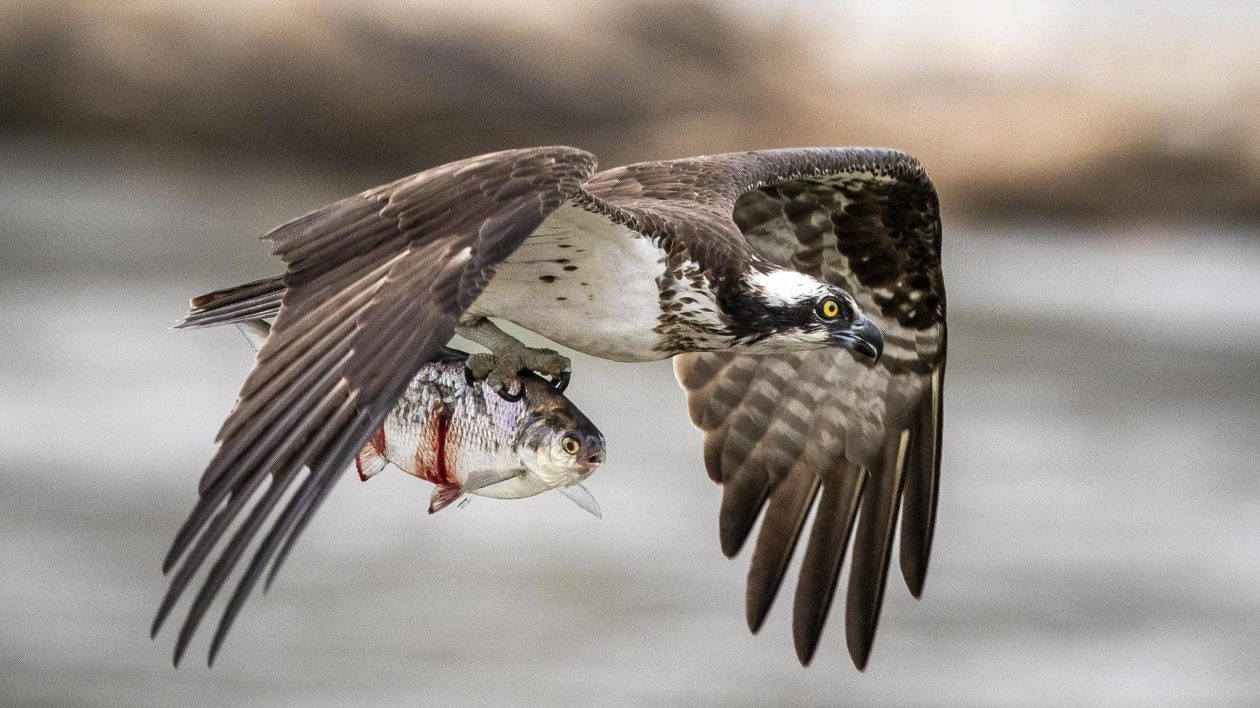
Predator and Prey
As a naturalist, my favorite sightings often do not involve seeing species but rather viewing interesting ecological interactions. And nothing is better than watching predators at work.
You can see fish feeding behavior in most freshwater systems in North America. When swarms of mayflies, caddis flies or stone flies hatch (in itself, a great spectacle to witness), fish gulp the aquatic insects in large numbers. On some trout streams, it can look like the water is boiling.
In still waters, you can often see predators like white bass slashing and “herding” minnow species. Watch closely, and you might see a bass smash a dragonfly or even a frog.
Of course, fish are often prey, too. On evening angling excursions, I tip my hat as ospreys fly over carrying flopping trout. I have watched mergansers gulp whitefish seemingly as long as the birds, and have delighted in the somewhat messy sight of a sleek mink tearing into a large fish. If you’re alert as you walk along any river bank, you can witness battles of life and death worthy of a documentary.
Where to Go: Go to any body of water and be observant, and you will be surprised at the predator-prey interactions you will see. Keep an eye out for stalking great blue herons, cormorants, pelicans and mergansers. Watch them and you’ll see master fish-catchers in action.
Mayfly hatches occur in nearly any coldwater stream with good water quality. You can see massive hatches (and fish feeding on them) on Pennsylvania spring creeks, Montana dam tailwaters, Rocky Mountain alpine ponds and even the Mississippi River, to name just a few.
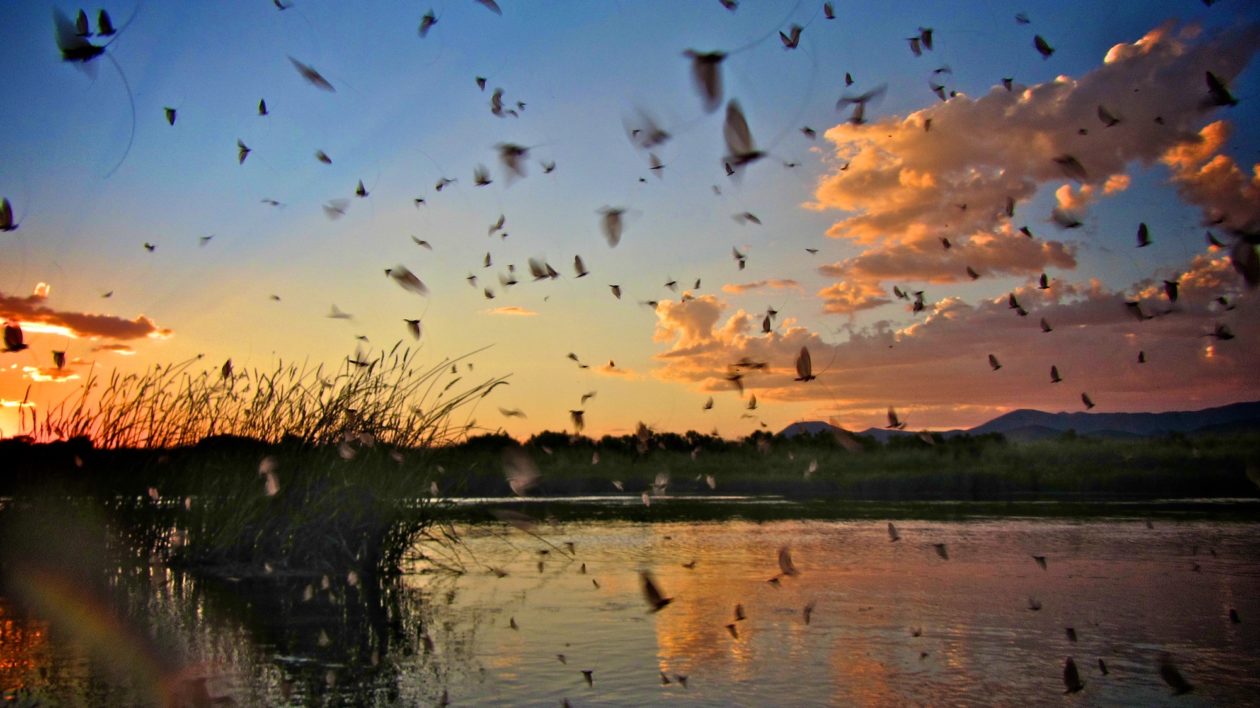
How to See Fish
If you just step up to a river and attempt to look beneath the surface, fish spotting can seem a daunting task. But you can actually learn to get good at it, and even identify fish species. Partly, it’s training your eye how to see fish.
If you’re a birder, hunter or naturalist, you probably already possess this skill. You will be out with friends and all of a sudden point out a woodpecker in a tree, or a deer standing at the edge of a forest. Your friends wonder aloud, “How did you see that?” Of course, you’re picking up on subtle visual cues, little movements, something that looks out of place.
It’s the same underwater. Polarized sunglasses help, but it’s largely a matter of picking up, well, fishiness. With practice, it becomes second nature – just as it is for birds.
Start with a small pond. Stand quietly and look. You might see a circle cleared in the gravel, the sign of a bluegill spawning bed. Or perhaps a log that isn’t quite a log; that could be a chain pickerel or largemouth bass or gar.
Wildlife watching is a skill that you pick up by lots of practice but also by simply being alert. This is equally true for underwater wildlife.
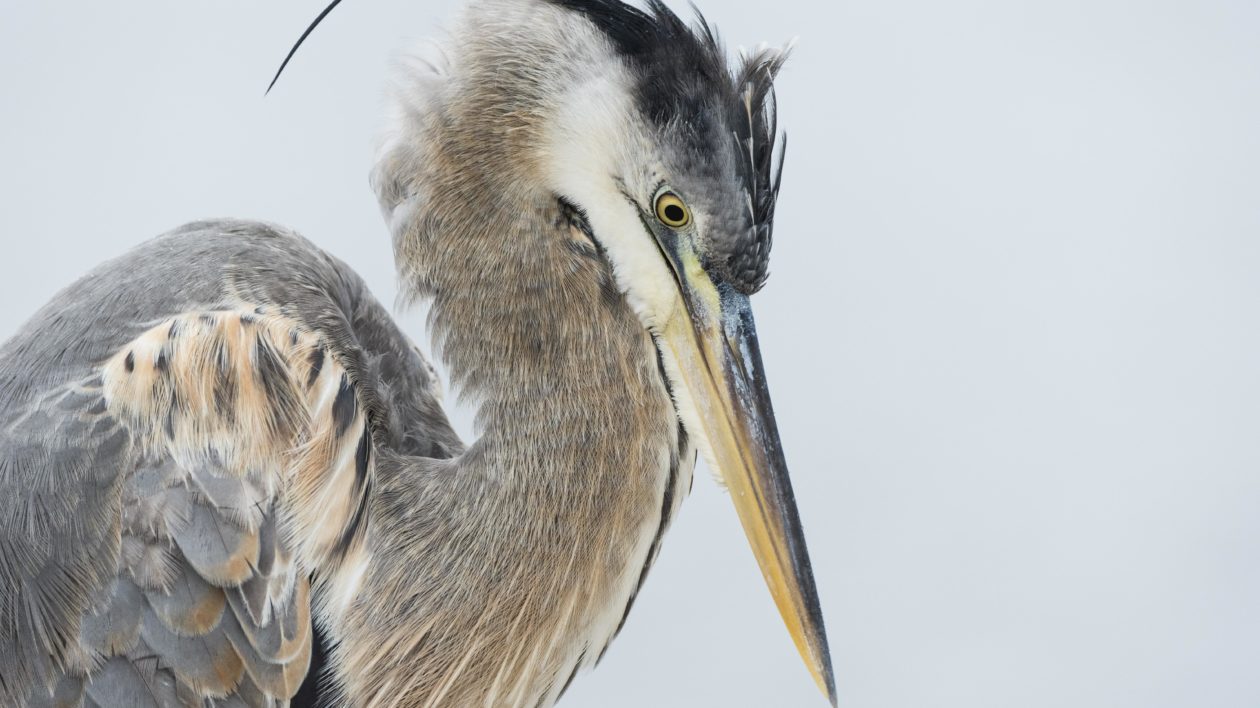
Identification Resources
Identifying many freshwater fish species, especially the smaller ones, can be a challenge. Underwater digital cameras, if you’re snorkeling, can help (you can often get quite close to fish when you’re swimming).
A good field guide is a must. Peterson’s Field Guide to Freshwater Fishes of North America is the standard, and both attractive and easy to use. There are a long list of state and regional freshwater fish guides, some of them handy in the field and others encyclopedic references better for home use. This site reviews many of them.
There are also some nice guides that cover freshwater biodiversity in general. The Field Guide to Wisconsin Streams covers just about anything you might encounter in a stream in that state, from plants to mussels to fishes. The Golden Guide Pond Life guide is great fun for kids, and I still find myself referring to it.
The North American Native Fishes Association includes anglers, stream snorkelers, aquarists and fish watchers. Its Facebook group is also excellent for identification. You will see fish identification requests on various angling social media groups, but they are notoriously unreliable. And you will encounter a distressing number of anglers who unhelpfully respond to an ID request by answering “It’s bait” (if it’s a small species) or “It’s a trash fish, kill it” (If it’s a larger one that isn’t a game fish). One fishing group that is different is Roughfish, a web site and social media group dedicated to the idea that all fish have value. Its members are very good at identifying species large and small.
There aren’t as many freshwater fish enthusiasts as there are, say, birders. That means they’re extremely friendly and willing to help. So pick up a field guide, and head out to the stream. There’s a whole world of biodiversity for you to watch and enjoy.
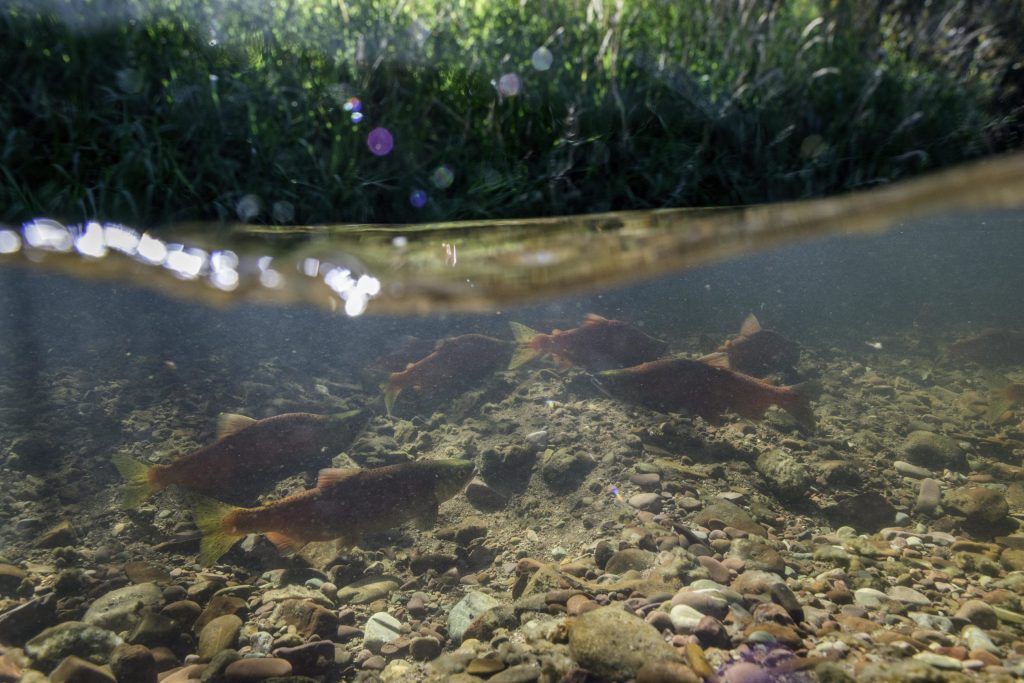



I’ve been looking at fish on Ohio Dominican’s campus (Columbus, Ohio) for the last 9 years; partway through my time here, a new bike path was established through campus, including a bridge over Alum Creek. That has proven to be a great place from which to watch fish; I recently had one of my classes up on the bridge looking for fish (and birds, and anything else we could find), and we were able to see Golden Redhorse, Northern Hog Sucker, Silver Shiners, bass, and Bluegill. In the past, I’ve regularly seen carpsuckers and Common Carp, and had occasional sightings of Muskellunge and some great looks at Longear Sunfish. As long as the water is clear, there are always fish to be seen.
Hi Blake,
That sounds like a great on-campus spot, and a cool list of species. Thanks for sharing!
Matt